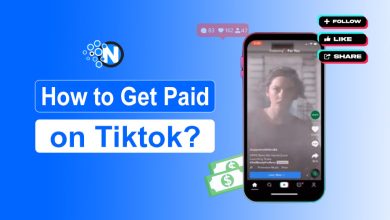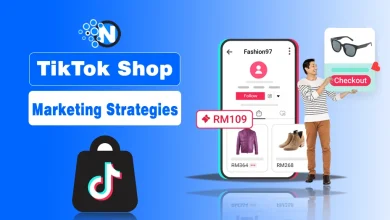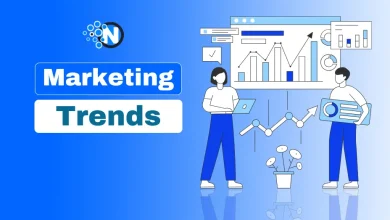Content Scheduling 101 : Inside Digital Sign Software

Suppose you’ve ever walked past a digital sign in a mall, airport, or even your local coffee shop. In that case, you’ve probably noticed how seamlessly the content flows, from morning promotions to lunchtime menus to evening events. That smooth transition of ads or information isn’t magic; it’s the result of smart content scheduling inside digital sign software.
In this blog post, you will learn about the various parameters for scheduling content within digital signage software. It includes the importance of scheduling, the characteristics, and the benefits of content scheduling within the digital sign software.
What Is Content Scheduling on Digital Signage?
Think of content scheduling as the calendar for your digital signage. Instead of manually swapping out images or videos every few hours, you set up a schedule in advance using digital sign software. The software then automatically plays the right content at the right time.
By aligning your content with your audience’s daily rhythm, you make your screens feel alive and purposeful to reach your goals.

The Role of Content Scheduling
The concept of scheduling content in digital sign software allows a user to organize a message and schedule it for a later date. This form of information dissemination guarantees that posts and updates set to be released on the displays run at the right time and desired pace without any human intervention. Timestamped messages fully eliminate any timeframe operator errors or general noncompliance with display messages.
How Digital Sign Software Handles Scheduling
Here’s what goes on behind the scenes:
- Playlist Creation: You build playlists of content (images, videos, text, or even live feeds).
- Time Slots: Assign specific times or recurring schedules (daily, weekly, monthly).
- Targeted Locations: Push different content to different screens—your downtown store might need different promos than your suburban branch.
- Automation: Once set, the system runs on autopilot, freeing you from constant manual updates.
Benefits of Automated Content Planning
This process entails setting up a full day, or multiple days in advance, to save time for the operators, prevent rushing, and provide some free time. Scheduling time ahead of any event eliminates multiple time-consuming repetitive tasks and encourages resourceful time management.
For pre-scheduling information campaigns, the main job is posting or exporting the whole event all at once. Lack of a plan can also result in conflicting messages and blank content displays on certain days.
Features Supporting Effective Scheduling
The software used for digital signs today incorporates many features. This includes calendar views and everyday displays where users can overview all scheduled posts, start to finish. In terms of flexibility, the software relies on interactions and simply showing the desired message.
Some location-based software features differentiate between the displays to avoid repetitions within the locations and templates for weekly events. The software can include setting up for a sequential display of content that relies on interactions to display.
Adapting to Real-Time Events
At times, you need to be very prompt with an important announcement because it is an emergency, or a sudden event has occurred. Digital sign software typically comes with the ability to override schedules to show on-screen emergency messages.
Speedy corrections take less than one minute and make sure all necessary information reaches viewers as soon as possible. This format is useful for safety alerts, weather warnings, or alerts for changes at the last minute.
Enhancing Consistency and Branding
Using the consistent visuals and messaging tonality communicates an organization’s identity. The scheduling tools complement branded content, as people can set up templates and a style guide beforehand.
When organizations are consistent with design elements used in scheduled messages, it ensures that they maintain a consistent brand image. Therefore, audiences will trust and recognize consistency over time.
Managing Updates Across Multiple Locations
If organizations have displays positioned in multiple locations, centralized scheduling is vital. Digital sign software enables users to manage content on one dashboard for all displays.
This functionality keeps messages the same, regardless of where you are. Remote management also facilitates the ability to respond swiftly to any new information or shifts in priority.
Improving Efficiency with Analytics
Most digital sign platforms come with analytics as a baseline feature to measure how content is performing. Through scheduling reports, we can see which message appeared at which time and other demographic insights.
These insights guide organizations to optimize their approach by identifying the messages that drive the greatest amount of interest. With data-driven scheduling, engagements can be enhanced, and displays can be put to greater use.
Best Practices for Successful Scheduling
If users want the optimal results, they should check content schedules on a regular basis. Working ahead on updates helps prevent last-minute scrambles and keeps messaging relevant.
Here are some best practices for smart scheduling”
- Know your audience’s habits: Tailor content to peak traffic times. Mix it up: Rotate content to avoid “banner blindness.”
- Plan ahead: Use seasonal calendars (holidays, sales cycles).
- Test and tweak: Review analytics to see what’s working and adjust accordingly.
Final Words
Scheduling content within the digital sign software is a key component in communication. With the right knowledge of its features and advantages, organizations can send timely and engaging messages with reduced manual intervention.
Scheduling mindfully helps facilitate excellent audience interaction and a well-grounded, stable presence. When done this way, digital displays become great enablers to communicate and connect.




